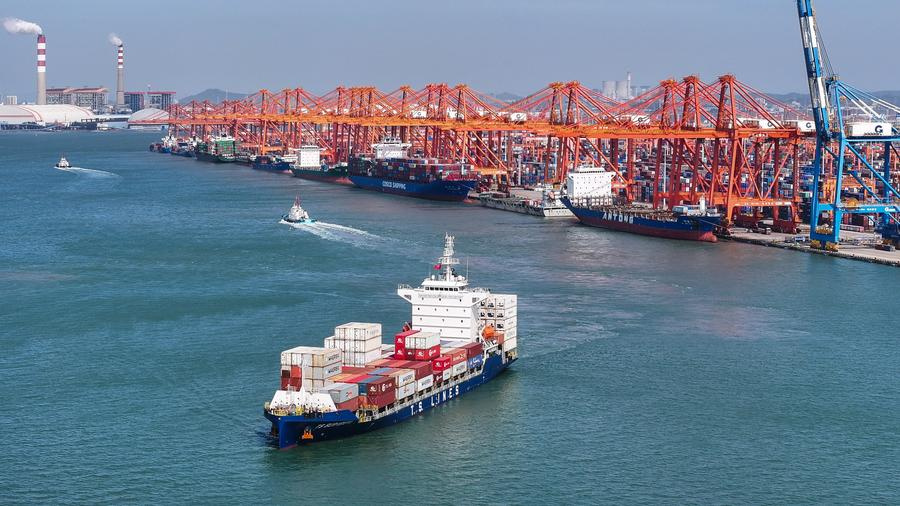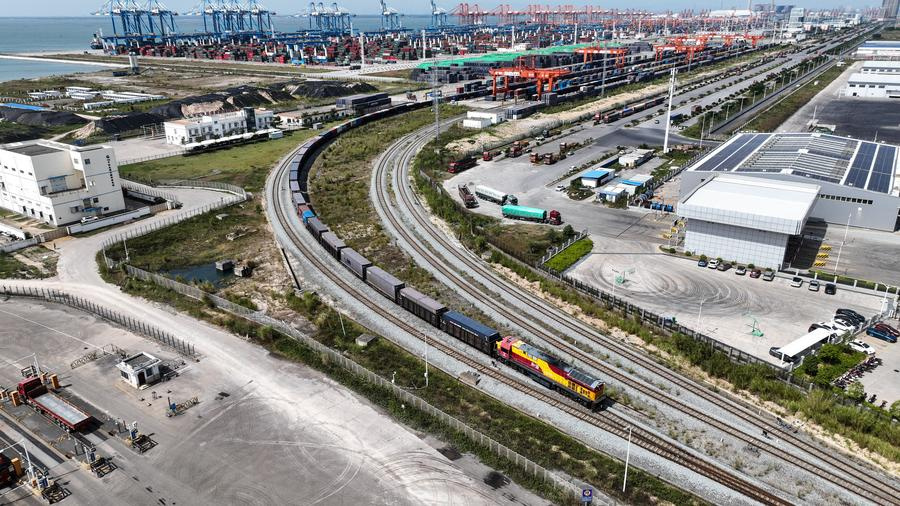China's gateway port to ASEAN sees skyrocketing NEV parts exports

An aerial drone photo taken on Oct. 24, 2024 shows a container ship carrying new energy vehicle (NEV) parts at the Qinzhou Port in Qinzhou, south China's Guangxi Zhuang Autonomous Region. [Xinhua/Zhang Ailin]
NANNING -- Qinzhou Port, China's gateway port to the Association of Southeast Asian Nations (ASEAN), has seen a 70-fold increase in the export of new-energy vehicle (NEV) parts over the past five years, according to data from the China Railway Nanning Group Co., Ltd.
As of Oct. 22, 11,370 twenty-foot equivalent unit (TEU) containers of NEV parts from Liuzhou, an inland city in south China's Guangxi Zhuang Autonomous Region, had been shipped from the Qinzhou Port so far this year, the data shows. Compared with the annual total of 160 TEU containers in 2019, this represents a 70-fold increase over five years.

An aerial drone photo taken on Oct. 24, 2024 shows a train leaving Qinzhou Port in Qinzhou, south China's Guangxi Zhuang Autonomous Region. [Xinhua/Zhang Ailin]
Exports of automotive parts of Liuzhou's locally-based SAIC-GM-Wuling (SGMW), a joint venture between SAIC Motor, General Motors and Liuzhou Wuling Motors, have expanded from the initial coverage of Southeast Asian countries to more than 40 countries and regions, including those in Central and South America and the Middle East.
To better serve the transportation needs of local NEV enterprises, railway authorities launched new rail-sea intermodal train services in July this year. Two trains are now operated regularly every Monday and Thursday, saving more than five hours in overall transportation time compared to the past.

A new energy vehicle (NEV) moves at an autorack in a logistics center in Liuzhou, south China's Guangxi Zhuang Autonomous Region, Oct. 23, 2024. [Xinhua/Zhang Ailin]
Liuzhou has a booming NEV industry, and the city's colorful array of small-sized NEVs has become a new calling card for the city.
Qinzhou Port Area is establishing itself as a high-level gateway port that facilitates cargo transportation between China and ASEAN.
























